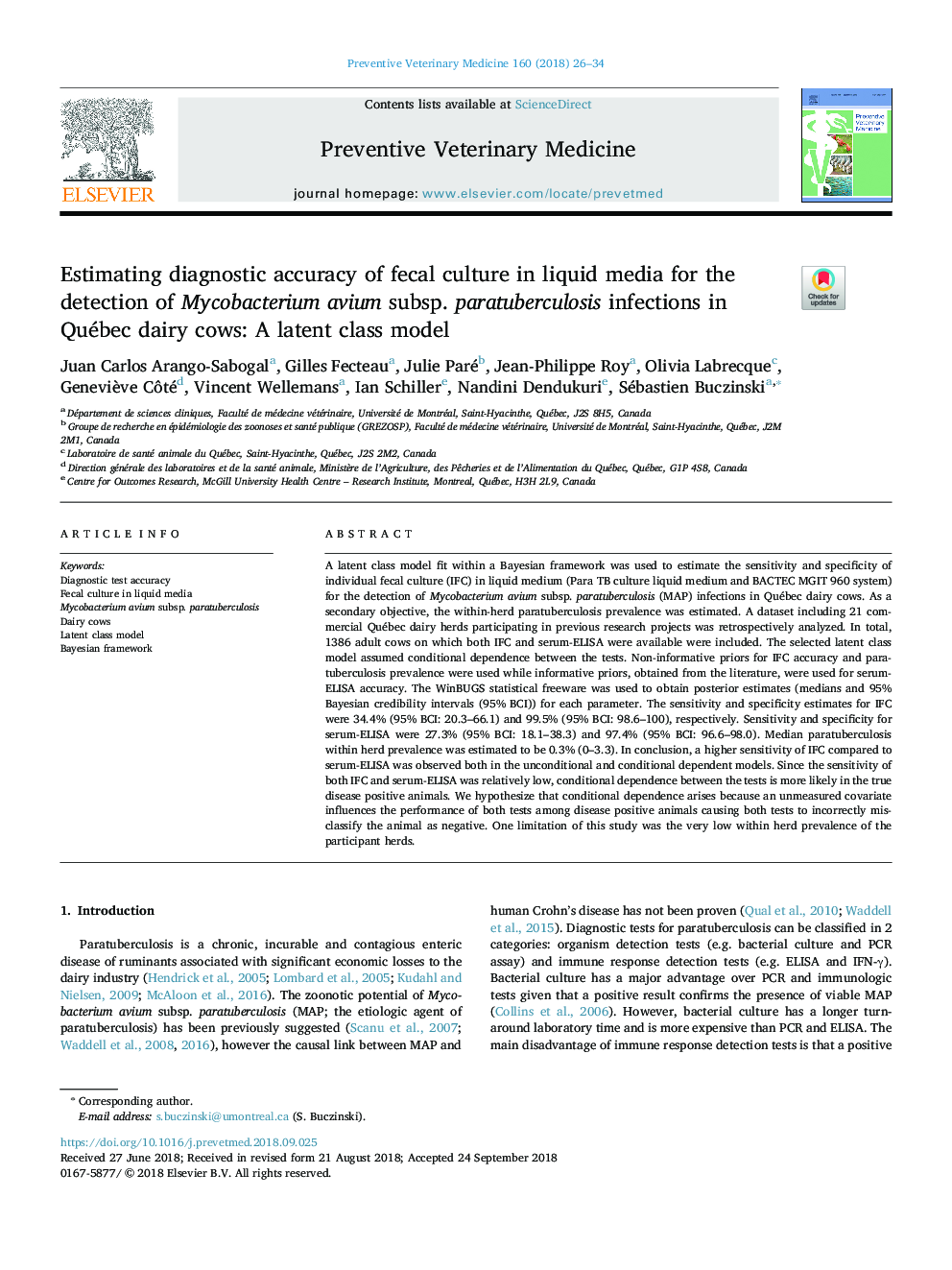| Article ID | Journal | Published Year | Pages | File Type |
|---|---|---|---|---|
| 11019403 | Preventive Veterinary Medicine | 2018 | 9 Pages |
Abstract
A latent class model fit within a Bayesian framework was used to estimate the sensitivity and specificity of individual fecal culture (IFC) in liquid medium (Para TB culture liquid medium and BACTEC MGIT 960 system) for the detection of Mycobacterium avium subsp. paratuberculosis (MAP) infections in Québec dairy cows. As a secondary objective, the within-herd paratuberculosis prevalence was estimated. A dataset including 21 commercial Québec dairy herds participating in previous research projects was retrospectively analyzed. In total, 1386 adult cows on which both IFC and serum-ELISA were available were included. The selected latent class model assumed conditional dependence between the tests. Non-informative priors for IFC accuracy and paratuberculosis prevalence were used while informative priors, obtained from the literature, were used for serum-ELISA accuracy. The WinBUGS statistical freeware was used to obtain posterior estimates (medians and 95% Bayesian credibility intervals (95% BCI)) for each parameter. The sensitivity and specificity estimates for IFC were 34.4% (95% BCI: 20.3-66.1) and 99.5% (95% BCI: 98.6-100), respectively. Sensitivity and specificity for serum-ELISA were 27.3% (95% BCI: 18.1-38.3) and 97.4% (95% BCI: 96.6-98.0). Median paratuberculosis within herd prevalence was estimated to be 0.3% (0-3.3). In conclusion, a higher sensitivity of IFC compared to serum-ELISA was observed both in the unconditional and conditional dependent models. Since the sensitivity of both IFC and serum-ELISA was relatively low, conditional dependence between the tests is more likely in the true disease positive animals. We hypothesize that conditional dependence arises because an unmeasured covariate influences the performance of both tests among disease positive animals causing both tests to incorrectly misclassify the animal as negative. One limitation of this study was the very low within herd prevalence of the participant herds.
Keywords
Related Topics
Life Sciences
Agricultural and Biological Sciences
Animal Science and Zoology
Authors
Juan Carlos Arango-Sabogal, Gilles Fecteau, Julie Paré, Jean-Philippe Roy, Olivia Labrecque, Geneviève Côté, Vincent Wellemans, Ian Schiller, Nandini Dendukuri, Sébastien Buczinski,
